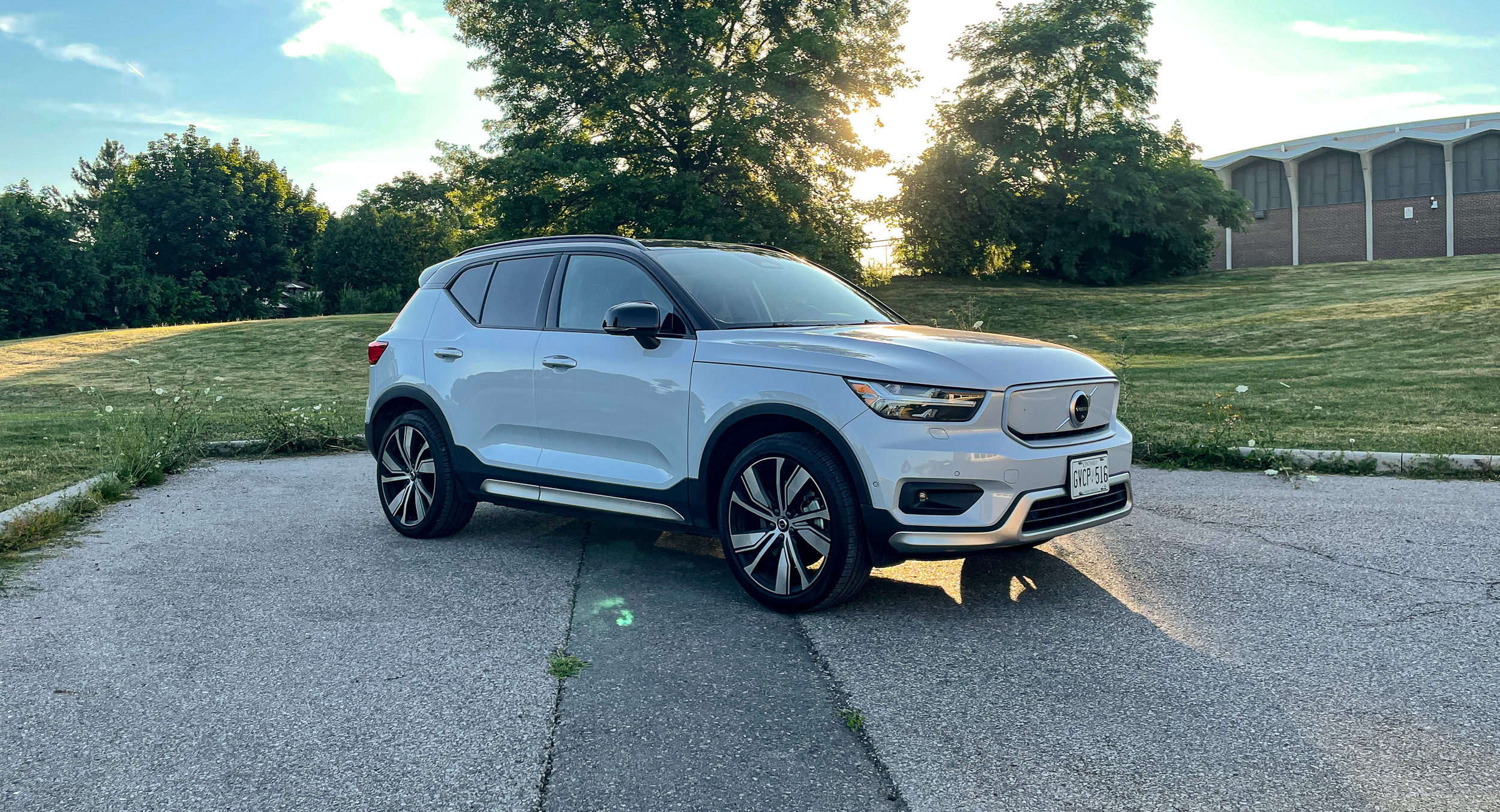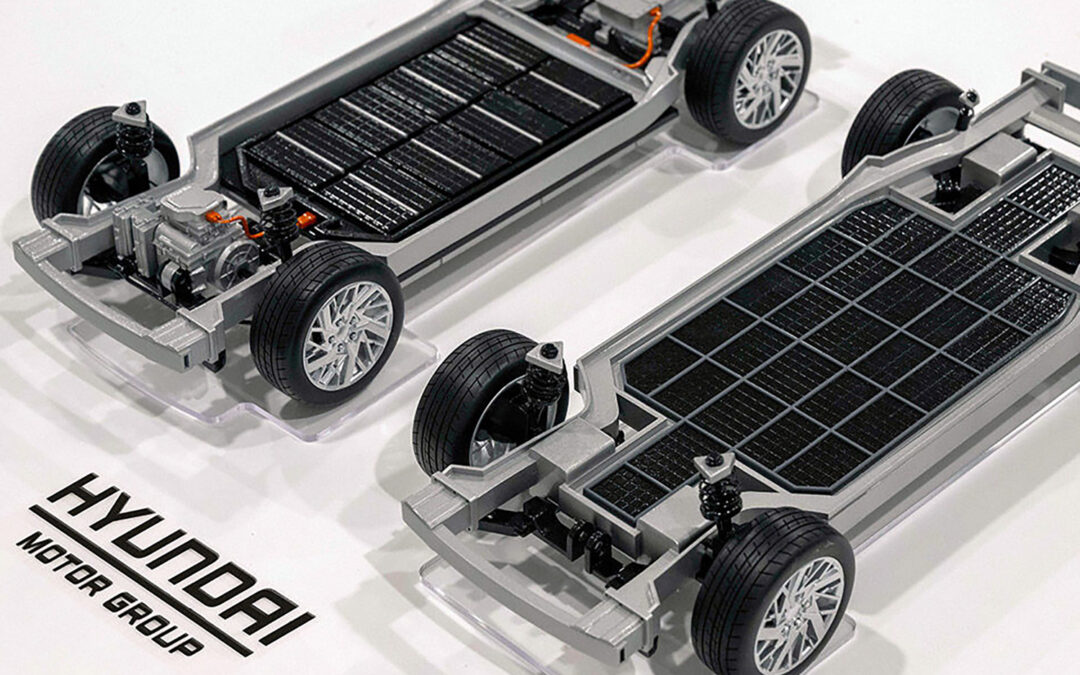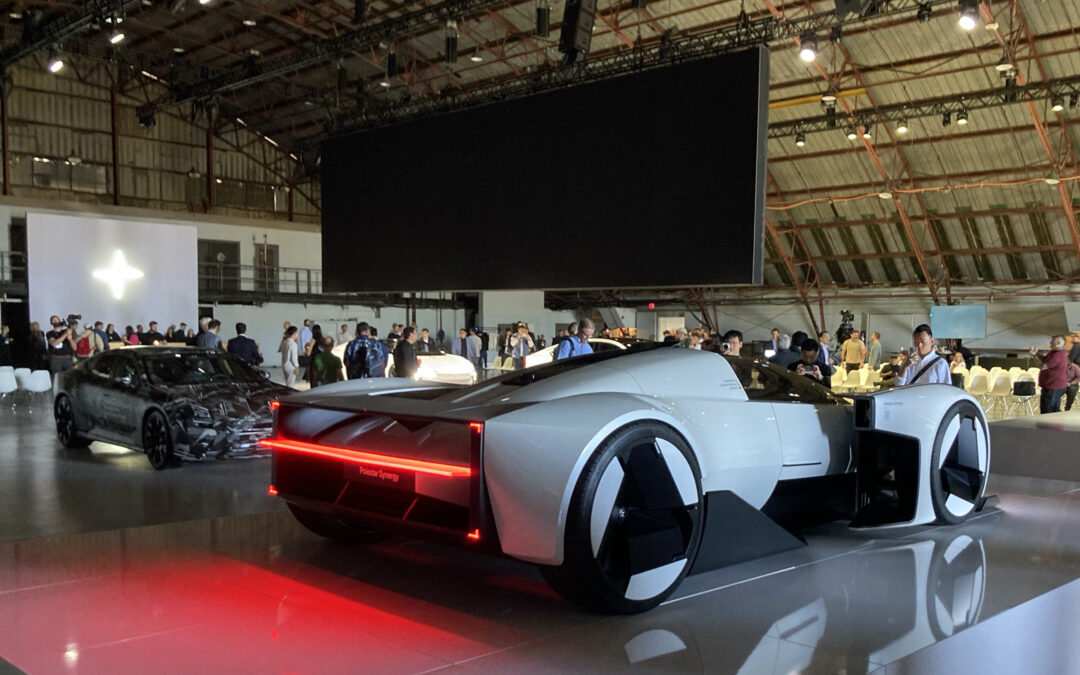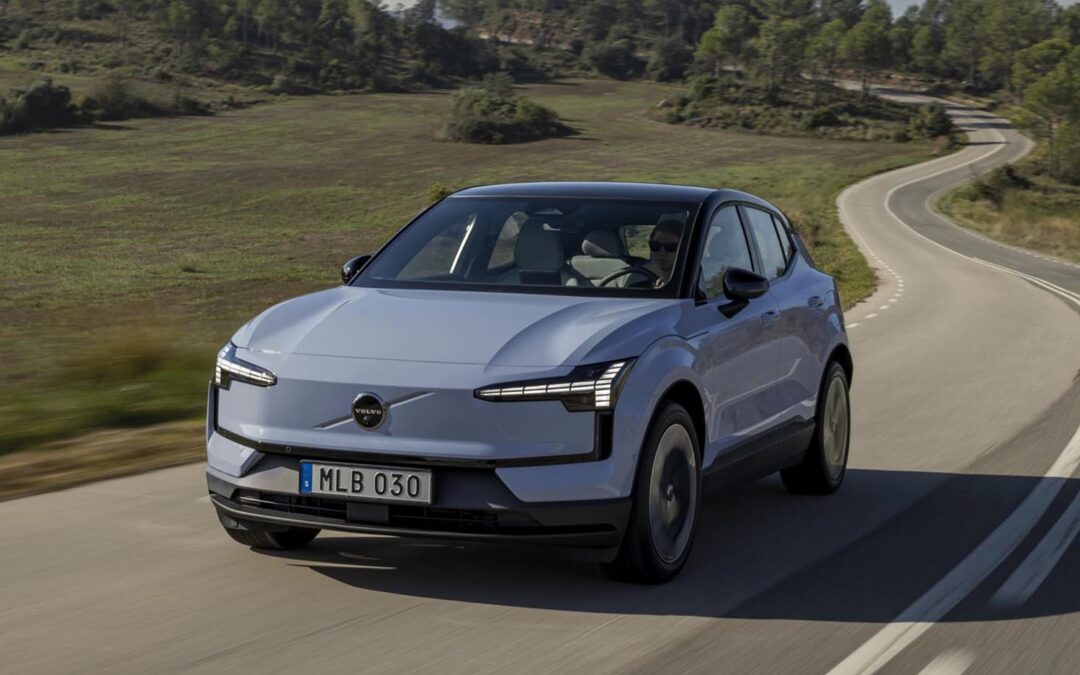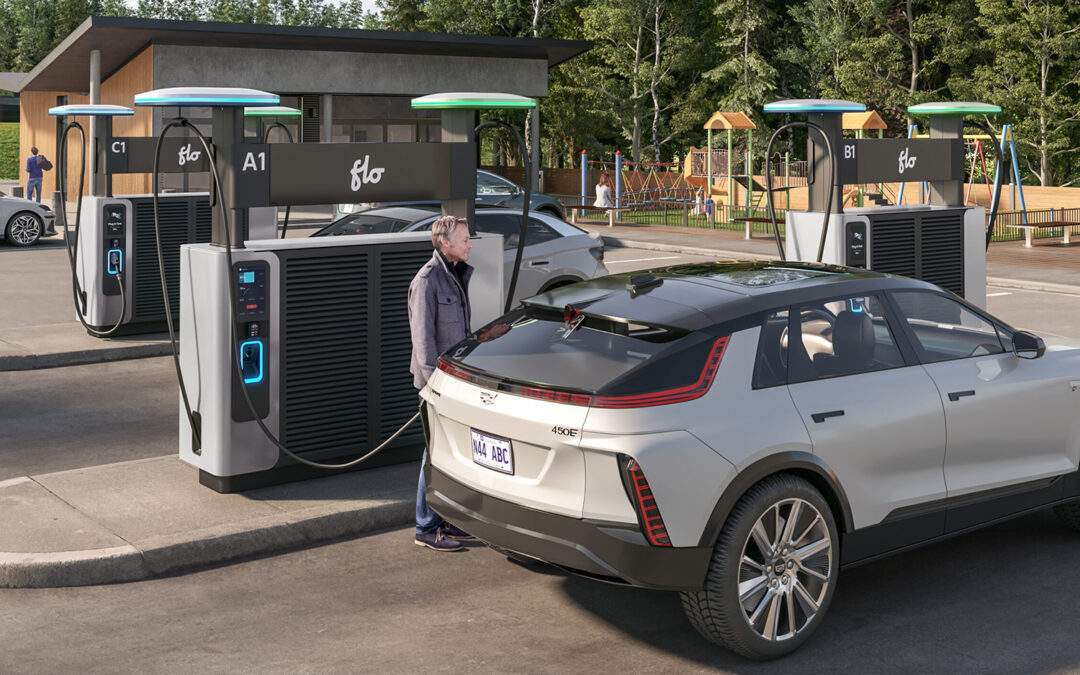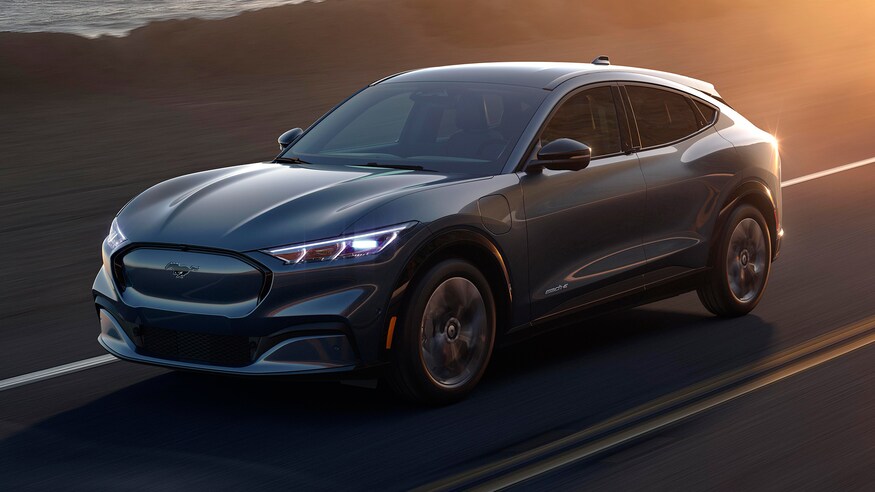If you have a moment, I want to talk about Volvo’s ‘One Pedal Drive.’
Set as default across much of Volvo’s electrified range, it’s a system that allows its driver to accelerate and decelerate using just the right pedal: when accelerating, the electric motor on our XC40 drives the front wheels as is customary; lift your foot evenly and gently back off the pedal, and resistance during the wheel’s rotation slows the EV and converts the kinetic energy into electricity, which is then sent to the battery.
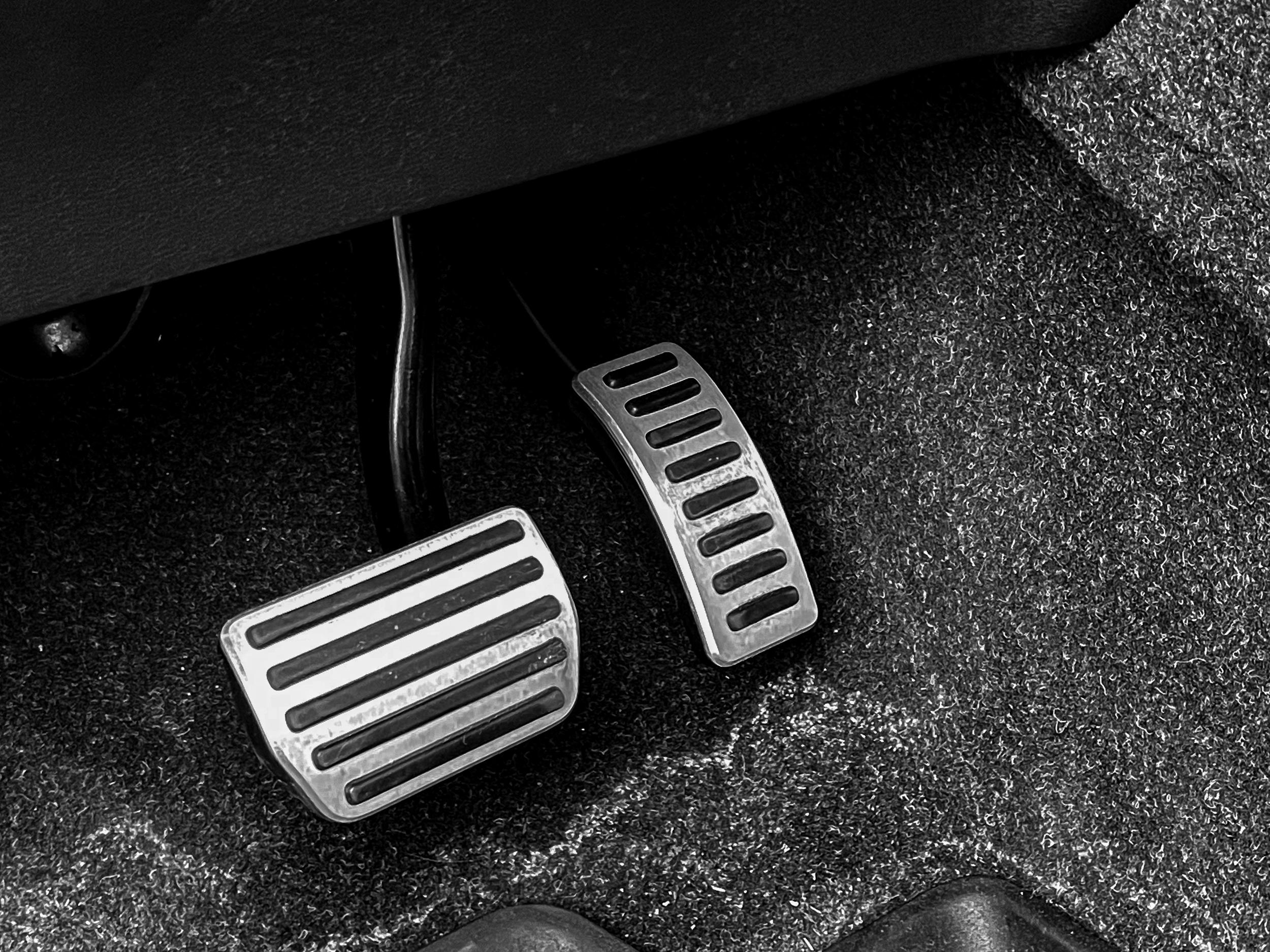
Volvo XC40 Recharge Twin / James Gent, The Charge
I bring this up because, a little while ago, this writer sampled “the future of Volvo,” i.e. the all-electric, only-available-online C40 crossover. And was very impressed. Save a rather grating rearview camera and a design that erred on the ‘safe’ side – spoiler alert – Volvo’s first dedicated EV proved to be roomy, comfortable, practical, surprisingly rapid, and just plain fun to drive. In short, pretty bloody good.
Much the same was found on the sister XC40 SUV sampled a few weeks later. Though derived from the combustion-engined XC40 that debuted two years earlier, the Recharge Twin model features the same CMA chassis as the C40, the same all-wheel drive powertrain, stands just 65 mm taller, and actually weighs in 40kg lighter than its crossover sibling. An extra couple of litres of cargo space means the C40’s already impressive practicality gets another shot in the arm.
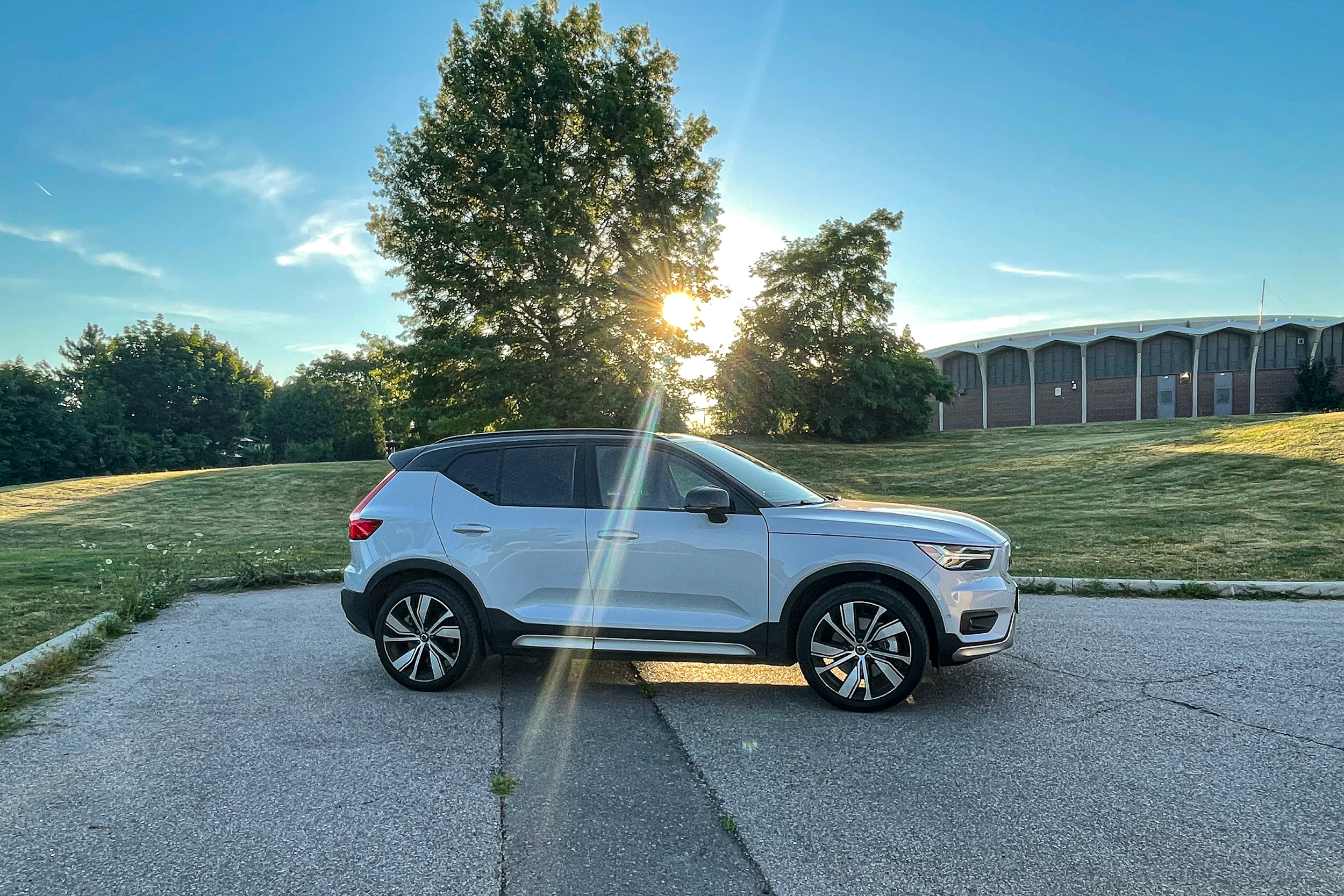
Volvo XC40 Recharge Twin / James Gent, The Charge
The impressive balance and well-weighted handling is there too, meaning the XC40 feels just as composed through the corners. Okay, the XC40 Recharge Twin may lose two-tenths to the more aerodynamic C40 on the sprint to 100 km/h, but with an identical 408 hp and 486lb ft (660 Nm) of torque on-tap, that determined surge of linear acceleration is no less impressive. Dial the leaden right foot back a little, and you’ll still extract upwards of 400 km of range from the 78 kWh battery.
Read more: The C40 Recharge Twin points to Volvo’s electric future
A couple of ‘terrible hardships’ aside – the 360-degree camera is still an unnecessary hindrance, and again, and a $73K-plus starting price for the top-of-the-range ‘Ultimate’ might still be a bit rich for some tastes – the “future of Volvo” is as safe with the XC40 Recharge Twin as it was with the C40, preferred body type notwithstanding.
Now, before you click ‘Reviews’ to see which Used EV Chris Chase is rolling out of his lock-up this week, I want to talk to you about One Pedal Drive. It’s a feature on both the C40 and the XC40 – indeed, and something I didn’t delve too far into during the C40 review.
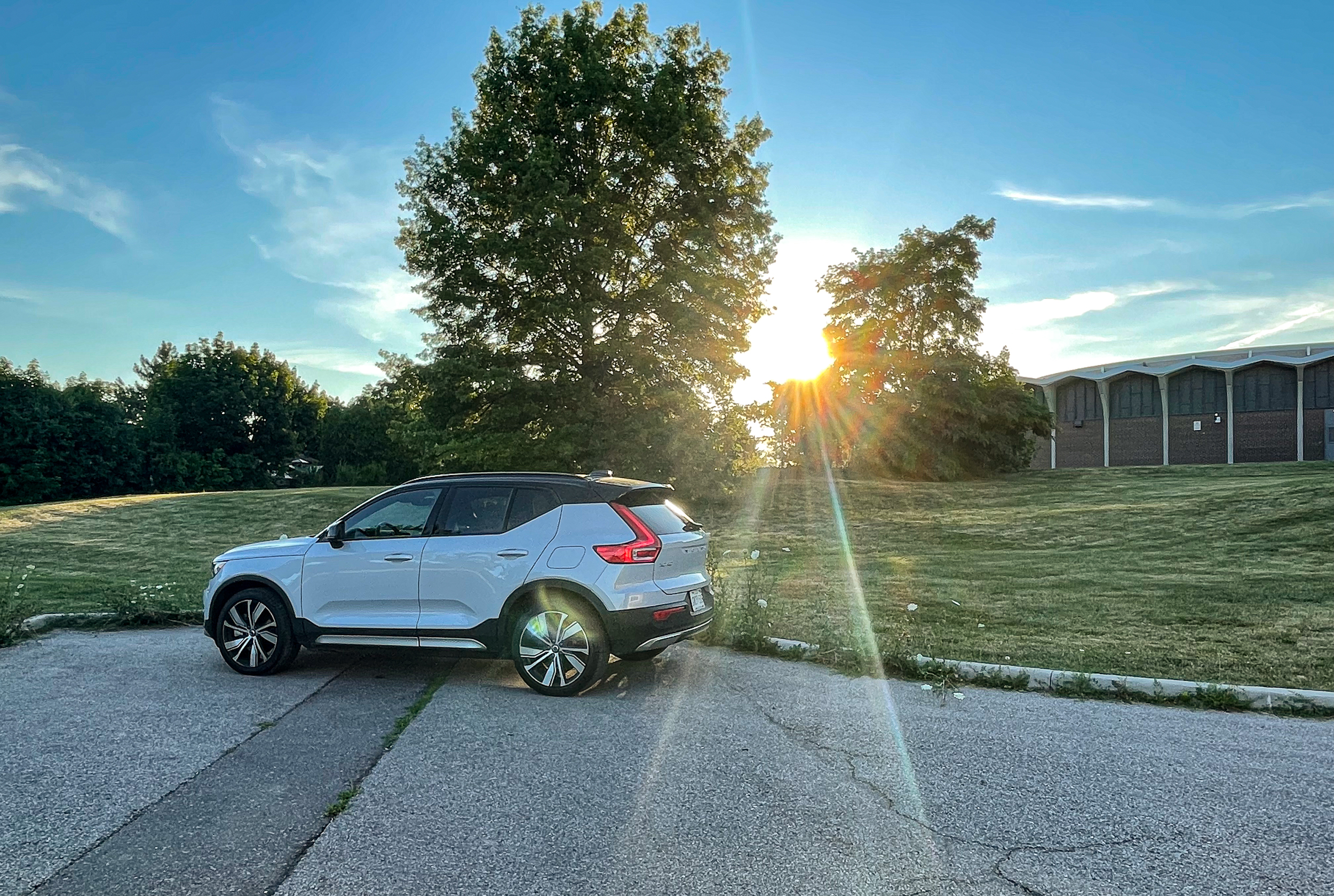
Volvo XC40 Recharge Twin / James Gent, The Charge
But not because it’s bad. No, no. If anything, One Pedal Drive’ is really quite brilliant!
Like regenerative braking as a whole, the benefits are myriad. Less stress and strain on the EV’s conventional hydraulic brake pads means more time between service intervals and replacements, as well as less brake dust being emitted. And while incremental on their own, each regen braking interval also minutely extends the range of the EV’s battery between charges. Clever.
But while many manufacturers opt instead for a paddle-system on the steering column, allowing drivers to adjust the frequency of the EV’s regen braking, Volvo has gone all out with One Pedal Driving on the XC40 and C40. One pedal. One setting.
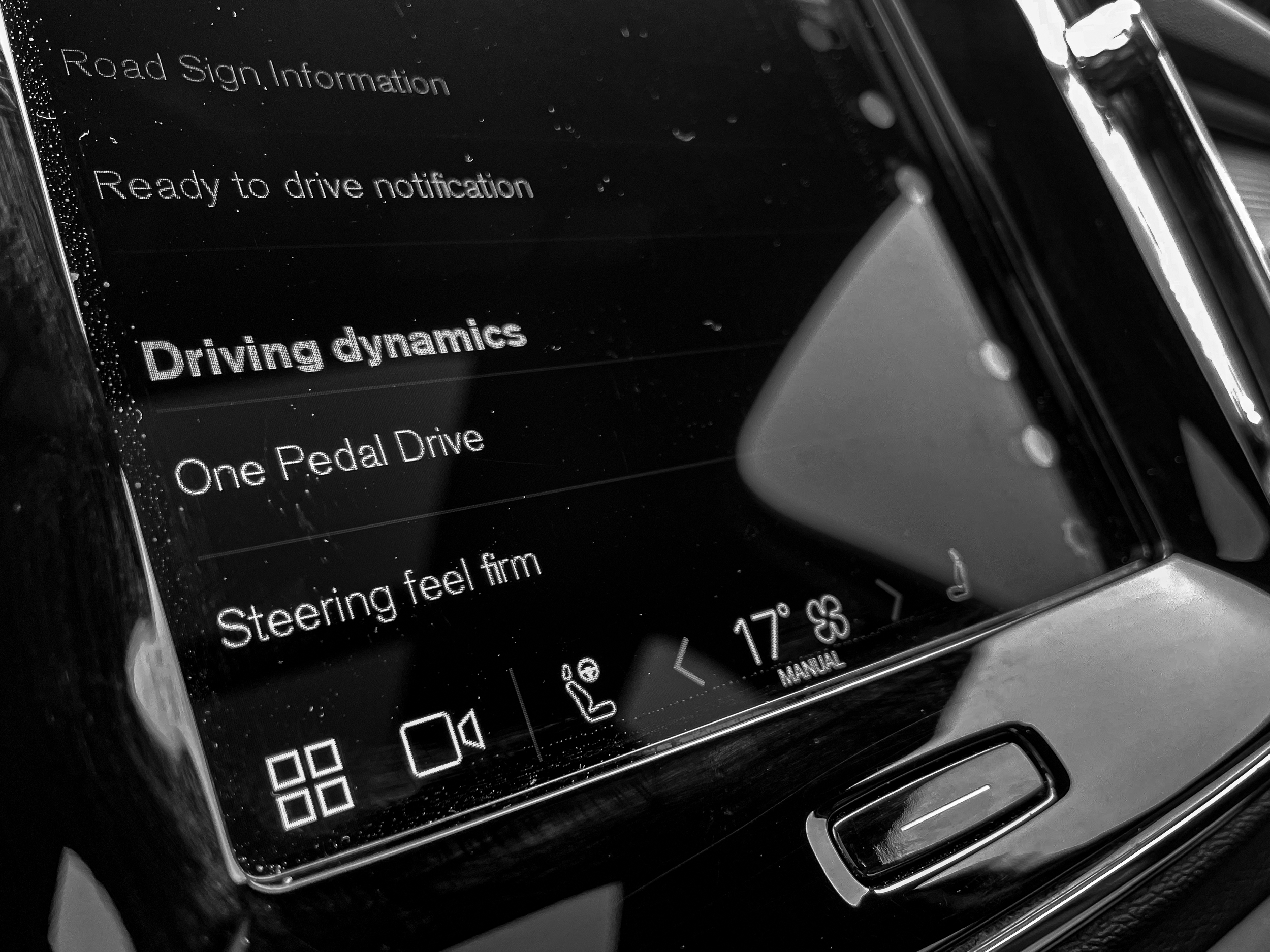
Volvo XC40 Recharge Twin / James Gent, The Charge
Now, don’t get me wrong, when used for the first time, the ferocity of One Pedal Driving can be quite alarming: the abrupt deceleration is such that, in much the same way you could short-shift from 4th in 2nd in an ICE vehicle, you will actively feel yourself being shoved forward in your seat using One Pedal. It’s so stark in fact that, if you lift your foot completely off the pedal and the EV decelerates by more than 1.3 metres per second, the system automatically activates the brake lights!
Now, chances are, I’ve already lost some of you: “can’t say I fancy a dose of whiplash every time I pop out for a litre of 2%, James.” A fine point, and I won’t profess that One Pedal Drive will appeal to everyone. Predicting as such, Volvo has included an option in the infotainment system to turn One Pedal off entirely, and the brand even suggests avoiding its use on congested highways for fear you inadvertently get rear-ended.
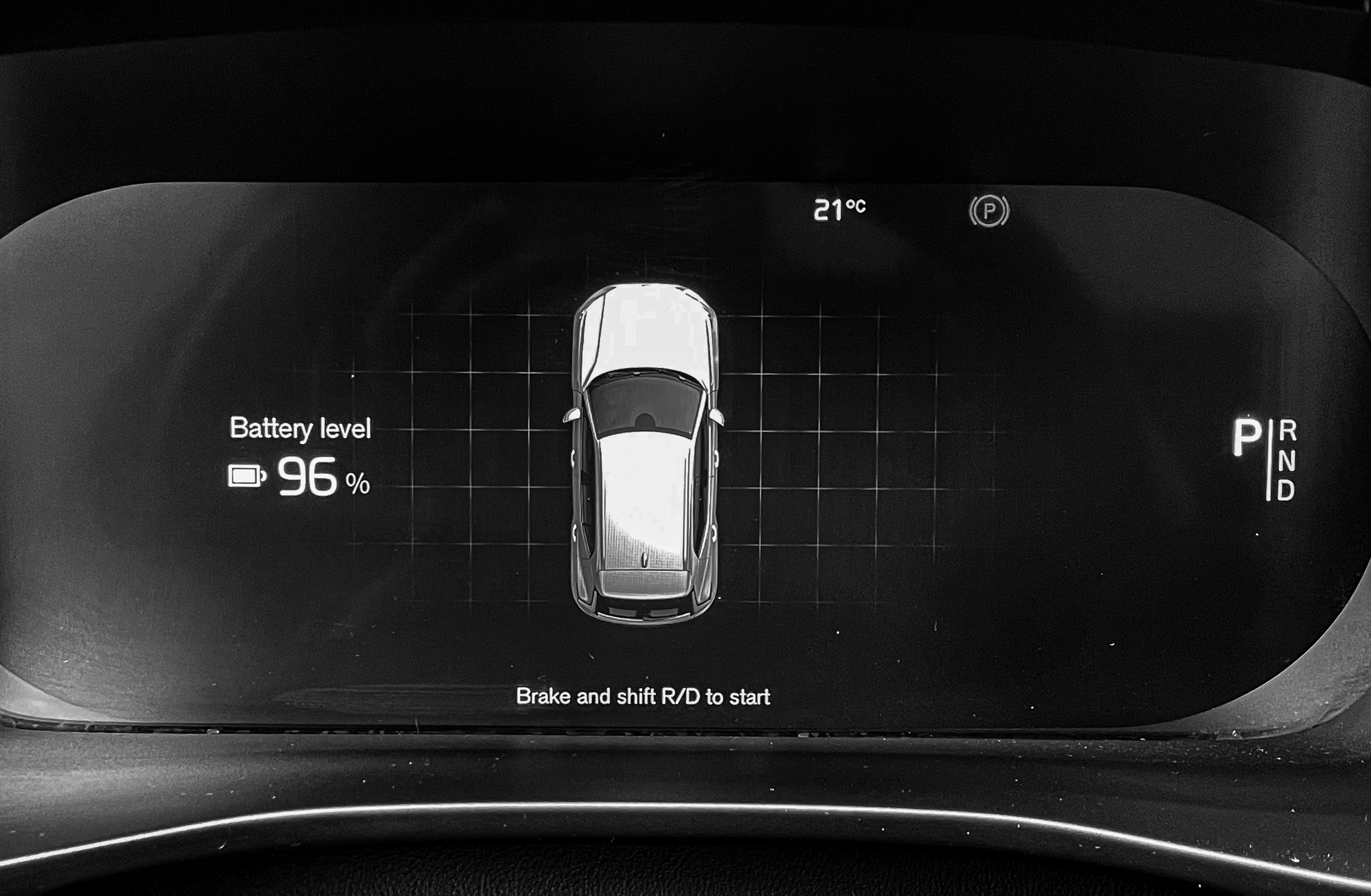
Volvo XC40 Recharge Twin / James Gent, The Charge
Learn to adapt your driving style to the system though and One Pedal Drive is, to this particular writer at least, a genuinely brilliant innovation for budding EV owners.
The ‘arduous’ task of swapping from the right pedal to the middle to the right again in stop-start traffic for instance is gone in a heart-beat, to say nothing of the far smoother manner in which the EV will glide to a stop sign or traffic light once you’re familiar with the rate of deceleration. Added bonus, One Pedal continues to slow the EV to a complete stop, unlike other high-regeneration systems that require a manual, confirmative ‘blip’ of the brakes.
On the more practical side of things, there’s the efficiency to consider. From start-up, the XC40 Recharge Twin is capable of between 400 km and 438 km, a broad bullseye we were able to hit during our test without the need for hypermiling. Suddenly the chest-tightening anxiety often at the core of EV ownership was … okay, not eradicated, but at the very least placated as we watched the speedometer needle metronomically dip from ‘Power’ to ‘Charge’ during our drive, the fuel consumption figure dutifully sitting comfortably in the green throughout.
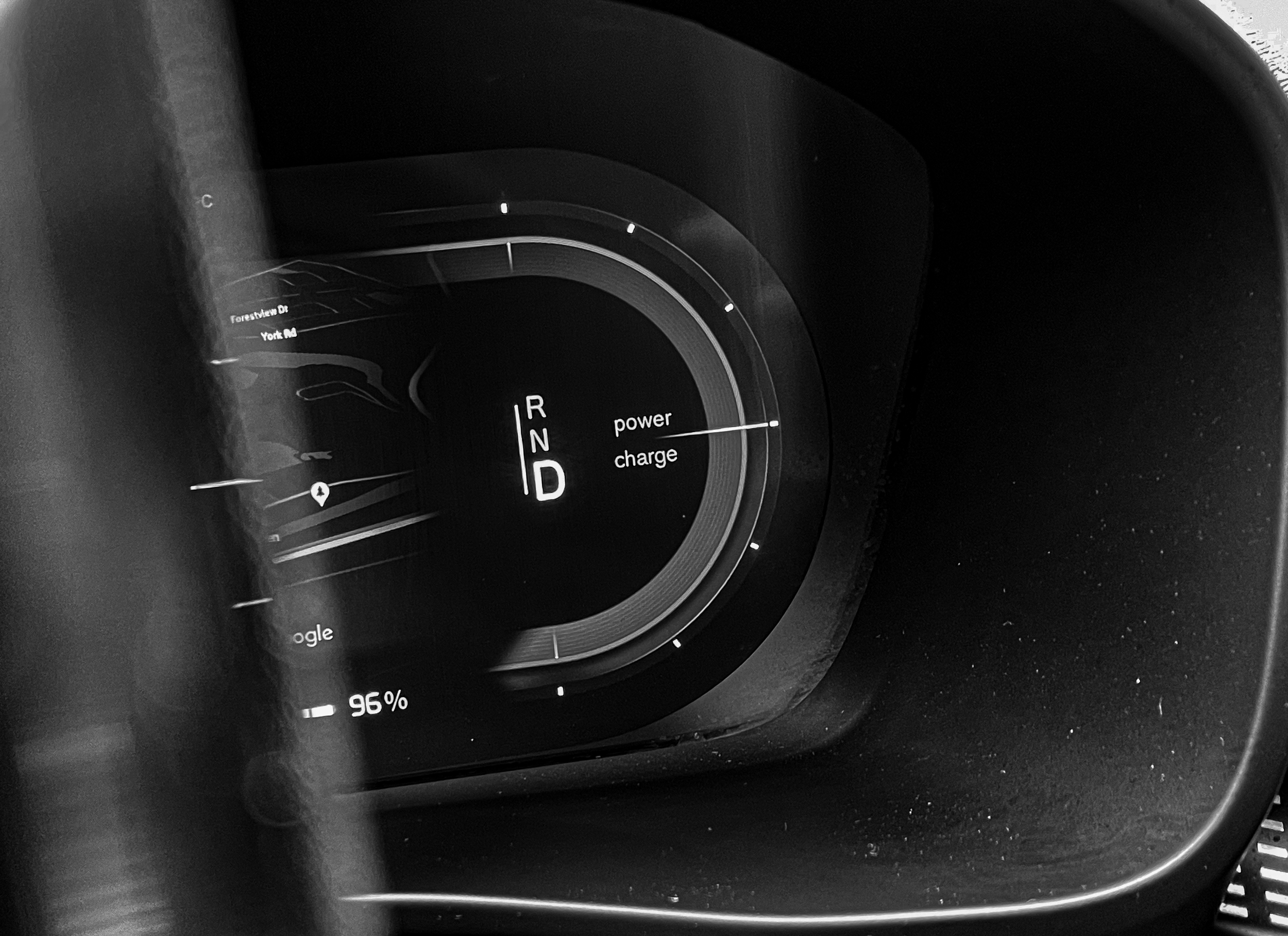
Volvo XC40 Recharge Twin / James Gent, The Charge
Driving a winding stretch of tarmac suddenly becomes more engaging too. With few of us bestowed with the gift of left-foot braking, One Pedal Drive allows its driver to flick the EV through the turns at a consistent pace simply by teasing the right pedal rather than jumping off it altogether. That may sound naff, but trust me, it adds an unexpected – and entertaining – challenge to winding through the back roads.
Let’s be clear though, while default, One Pedal Drive is not a system that will appeal to all comers. For those exploring EV ownership for the first time, the on/off sensation could well prove exhausting at best, and intolerable at worst. And while the brake lights will automatically activate beyond 1.3 m/s deceleration – and not at all during the below 0.7 m/s tour – there is that 0.7 m/s to 1.3 m/s window where the brake lights… ‘may’ come on. That could rankle, as unlikely as it is for the system to be wholly responsible for a prang in stop-start traffic.
Still, this particular writer is impressed with One Pedal Drive. So much so that, when time came to hand back the XC40 Recharge Twin and jump once again into the family’s trusted Ford Edge, he nearly ran a stop sign simply because he was out of practice with the middle pedal.
Like I say. This part of the “future of Volvo” does take some getting used to.
